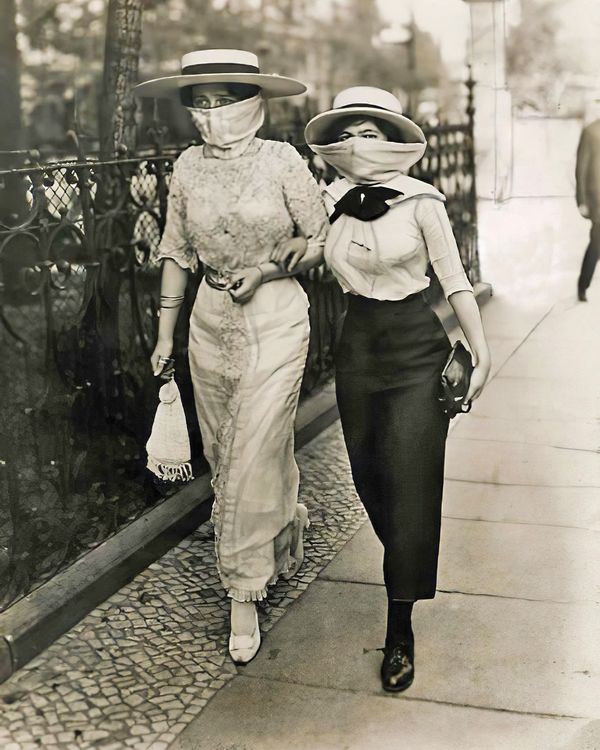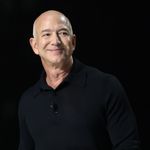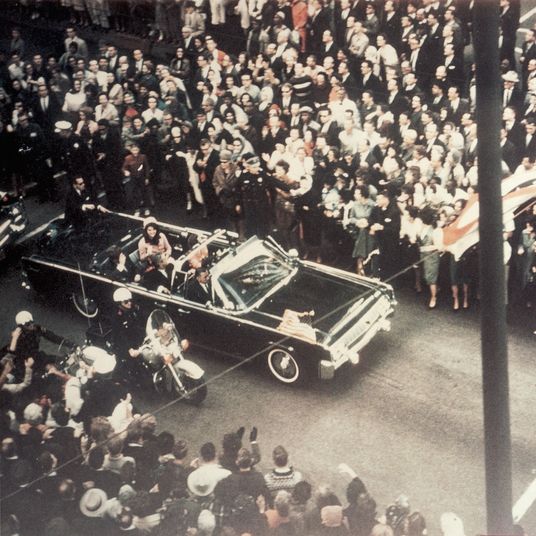
Almost as soon as the first marches to protest the killing of George Floyd began, in Minneapolis on May 26, conservatives and COVID contrarians seized on the rallies as a case study of liberal coronavirus hypocrisy. If the disease spread rapidly through the assembled protesters, they felt, it would show that those who’d spent the spring scolding Americans for resisting lockdowns didn’t care as much about public health as they did about advancing their own set of political values. (Liberals, of course, would put it differently: that the cause was worth the risk.) If there were relatively few new cases, the thinking went, it would demonstrate that the lockdowns themselves were unnecessary.
Three weeks later, we have the first results from the natural experiment: Across the country, from Minneapolis to California and New York City to Albany, the protests produced, at most, very few additional cases of COVID-19. The same, more or less, was observed in the aftermath of the much-derided Lake of the Ozarks Memorial Day party (where one sick partygoer may have infected as many as … one other). Does this mean we’re out of the COVID-19 woods, all clear for mass gatherings and the end of social distancing, and that the intrusive and intensely burdensome lockdowns of the spring were excessive? Well, no. The same week, a major study led by Berkeley’s Solomon Hsiang exploring the effect of lockdowns across the world found that, in the U.S., social distancing and shelter-in-place guidelines prevented as many as 60 million additional cases (since, at least in the early days of the epidemic, many more are believed to have been infected than were tested for the disease). And if those measures had been implemented sooner and more effectively, one review suggests, between 70% and 99% of American deaths could have been avoided. Instead of 120,000 deaths, we might have had fewer than 2,000.
These two findings would seem to contradict each other, but only if you are proceeding from the reductive assumption that either lockdowns were absolutely necessary or that no precautions at all were. But whatever your impression as a lay consumer of public-health guidance, scientists have known for months that “all or nothing” was a misleading way to approach the question of how to combat the spread of the disease — which could be substantially mitigated by warm weather, mask-wearing, and better hygienic practices (and whose lethality would be reduced significantly if those who were infected in environments like rallies were mostly young and healthy). Indeed, one recent analysis of more than 1,000 “super-spreader” events around the world, for instance, found that more than 97 percent of them took place indoors (most of them also during local flu seasons and in settings that put people into close contact with one another for long periods of time). As Emily Atkin, among others, has pointed out, this is what makes the president’s Tulsa rally tonight so much more dangerous than any of the protests he’s been trolling and threatening from the bunker of the White House over the last few weeks.
But all the way up through the beginning of the protests, and even after, America’s jury-rigged, Rube Goldberg health-messaging apparatus (epidemiologists, local public-health officials, civic-minded journalists, improvising and coordinating guidance in the total absence of any federal leadership) failed to communicate most of these nuances — suggesting, for instance, that Georgia’s reopening was a “death sentence,” and that its governor, Brian Kemp, had “blood on his hands,” rather than emphasizing relative risks and the precautions that might be taken to avoid them. The Atlantic ran a piece calling the state’s reopening “an experiment in human sacrifice.” Groups of scientists who would weeks later defend the marches on public-health grounds vociferously attacked Wisconsin’s in-person election. Even the same scientist who called reopening the economy “extraordinarily dangerous” in late May “wholeheartedly” defended and embraced the protests in early June.
And while there has been plenty of crowing among conservatives, recently, about what these reversals say about liberals’ true concerns, the failure on the right has been considerably larger — because while it is indeed the case that reopenings can be relatively safe if the right precautions are taken, conservative leaders in the states reopening first have done basically nothing to ensure that they are. In Arizona, where the pandemic is growing rapidly, the governor has even tried to prohibit local officials from offering mask-wearing advisories.
This erratic pattern of advisories wasn’t just about mass gatherings, in other words. And it wasn’t a sign that the underlying science had changed; it hadn’t. Instead, it reflects an unfortunate pattern from the first months of the pandemic, in which public-health messaging has had a considerably less stellar and considerably less reliable record than you might hope for — not just for those worrying about the coronavirus threat but anyone who is concerned about the status of scientific expertise and technocratic policy more generally.
In January, as the earliest scary research into the outbreak in Wuhan began arriving from China, public-health officials downplayed the threat and systematically advised coronavirus panic be channeled into vigilance about the flu, which they considered a bigger problem. In February, as initial data arrived from China showing a dramatic age skew in mortality, with the older at far greater risk than the young, and the very old at greater risk still, political leaders and public-health officials did practically nothing to protect the most vulnerable. Indeed, in New York, where now 6,000 have died in nursing homes, totaling roughly 6 percent of the nursing-home population, Governor Cuomo granted legal immunity to the executives who run those facilities; in California, where no such immunity was given, the toll was just 2,000, meaning less than one percent of its assisted-living population (though, to be fair, the total death toll outside nursing homes was much lower as well). In March, as evidence about the imperfect-but-still-significant efficacy of masks began rolling in, the WHO continued to advise against them. As recently as March 8, Anthony Fauci was advising the same thing on 60 Minutes, presumably to try and head off a possible mask run that would leave health workers undersupplied. In April, as it became clearer that outdoor transmission was significantly harder than indoor transmission, public officials across the country nevertheless continued closing parks and beaches.
All of this guidance was issued in something of the fog of war, of course, and each piece, taken on its own, might seem sensible — the science being new, and imperfect, and often contradictory, it’s reasonable to try and guide the public toward more caution rather than less. But taken together they suggest a perhaps concerning pattern, one familiar to me now from years of writing about climate change and its long-understated risks: Instead of simply presenting the facts — what they knew, how certain they were about it, and what they didn’t know — experts massaged their messaging in the hope of producing a particular response from the public (and with the faith that they can expertly enough massage it to produce that outcome).
This has been a global pattern, or at least was in the early days of the epidemic. But almost everywhere but America, the experts learned their lesson quickly. At first, a combination of cultural hubris and geopolitical prejudice meant that essentially no western nation took the outbreak in China seriously, with none implementing the precautions necessary to prevent an initial outbreak. (Other Asian nations, less inclined to chalk the Wuhan lockdown up to either exotic Chinese hygienic and dietary practices or to needless authoritarian overreach, responded much more quickly, and were much more prepared when the disease arrived on their shores.) But in just about every single western nation but the U.S., that initial spike was followed by a dramatic decline. Here, we’ve had nothing of the sort, somehow refusing to learn from anyone else in the world (or even from other parts of America.) Just look at this chart, which may be the single most damning illustration of American failure yet produced.
As Alexis Madrigal and Robinson Meyer wrote recently in The Atlantic, the country seems now to be giving up on defeating the disease, after what their colleague Derek Thompson has described as an across-the-board, country-wide failure of institutions. (Though, as Thompson points out, the Federal Reserve stands almost alone in breaking from conventional restrictions and responding aggressively to the crisis, a sign that of all the aspects of what economists call “state capacity,” at least at present the U.S. seems only able to muster that capacity to bolster its financial markets.) Many of these choices have been political, of course — partisanship getting in the way of any honest reckoning with the state of the science. But even Obama health-care adviser Ezekiel Emanuel, who recently touted a study showing several hundred thousand American cases were averted by mask-wearing, spent the winter insisting categorically that masks could not help. This week it was announced that, inside the White House, officials will no longer be required to wear them.
Throughout these months, public-health messaging was hobbled by two complementary and distorting convictions. The first was a strong preference for universal messaging rather than more targeted guidance, which brought us to effectively national shelter-in-place orders before most of the country had even tried social-distancing, mask-wearing, and a focus on the most vulnerable. This impulse is understandable, to some degree, since universal vigilance helped prevent spread to the most vulnerable, and since, in general higher vigilance has been useful in stemming the flow of the disease. But in some cases a more targeted approach would’ve been preferable — both more effective and more palatable. And it meant that rather than a slow ratcheting up of concern, beginning in January, the public was treated to a whiplash from “Just the flu” to “Stay home, perhaps for months.” As a result, we didn’t even try some of the moderate measures, like mask-wearing and the end of medium-size public gatherings, that have allowed Japan to basically defeat the disease without much pain at all. And as Zeynep Tufecki put it on Twitter, “when we conflate the highest risk and the lowest risk activities, we’re telling people it doesn’t matter what they do.”
The second was a lack of confidence in the public’s ability to process nuances and act responsibly, so that rather than be transparent about the limited protection offered by masks and the risks of supply problems, officials and journalists told the public they were useless. Similarly, rather than emphasizing that outdoor activity was basically safe, so long as you kept your distance from one another, we were told that for all but the most essential activities we should stay indoors — where we then entertained ourselves in part by shaming those selfish enough to walk through the local park or go to the beach. The most potent weapons in the public arsenal against the pandemic all require buy-in from the public, and this muddled and erratic messaging has already undermined the trust on which such buy-in is transacted. As Chris Hayes has suggested, the only real hope for states like Arizona, where ICUs are quickly approaching capacity, is universal mask wearing — but it’s almost impossible to imagine the state actually honoring a policy like that, at this point, were it even implemented. The messaging problem has not been as big a problem as the failure of federal leadership and guidance, of course. But it compounds it, depriving Americans of the tools they’d need to navigate the pandemic landscape on their own, having resolved that they should disregard messaging from the White House. For all the love showered on Anthony Fauci through the spring, the failure to push mask-wearing when it might have really mattered may ultimately prove the most catastrophic misstep of the whole American response.
The cost of all this failure is becoming terrifyingly clear, even as the country has begun a rapid and humiliating project of normalization. Over the last few weeks, as the deaths of almost a thousand Americans a day has retreated into a sort of cultural background noise, with the protests taking its place on the country’s front pages, the total death toll has passed a series of grim milestones: more Americans dead than in all the wars the country has fought since World War II, more than died in the 1957 flu, more dead than soldiers lost in World War I. Perhaps the most illuminating comparison is this one: The U.S. has about 4 percent of the world’s population and about 26 percent of its COVID cases — more than twice as many as the next country, Brazil, and more than 20 times the official number reported by China, the world’s most populous country (and of course the one where the coronavirus first appeared).
In other words, the world’s richest country, and as recently as the Ebola crisis of 2014 the planet’s leading disease-response force, has become, in this outbreak, the single most significant global incubator of the pandemic, perhaps even more central to the worldwide distribution of COVID-19 than its country of origin. At the very least, we should not be surprised if, over the next few weeks, the explosion of cases in Latin America, where the pandemic is growing fastest, are traced back to the U.S. And if, as a result, the U.S. response comes to be seen globally as not just a domestic catastrophe or the sign of the total failure of American leadership on global health, but the central worldwide driver of this, the worst pandemic since 1918. That intervening century was once called the American one.
*A version of this article appears in the June 22, 2020, issue of New York Magazine. Subscribe Now!





























